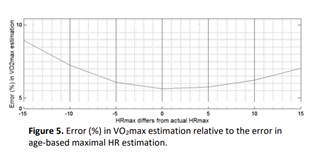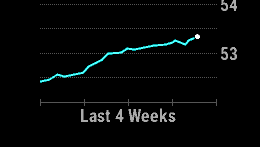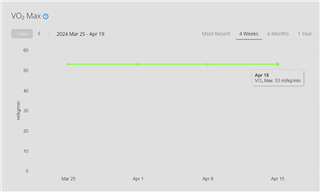Hi I've been running and my VO2 Max was ranging between 46-49 for several months. In Jan I went back cycling and my VO2 max - both in running and cycling - dropped 15 points from one week to another (48 to 33). I have set my max HR manually and is the same for both sports. Can you please advise what have happended? thanks





